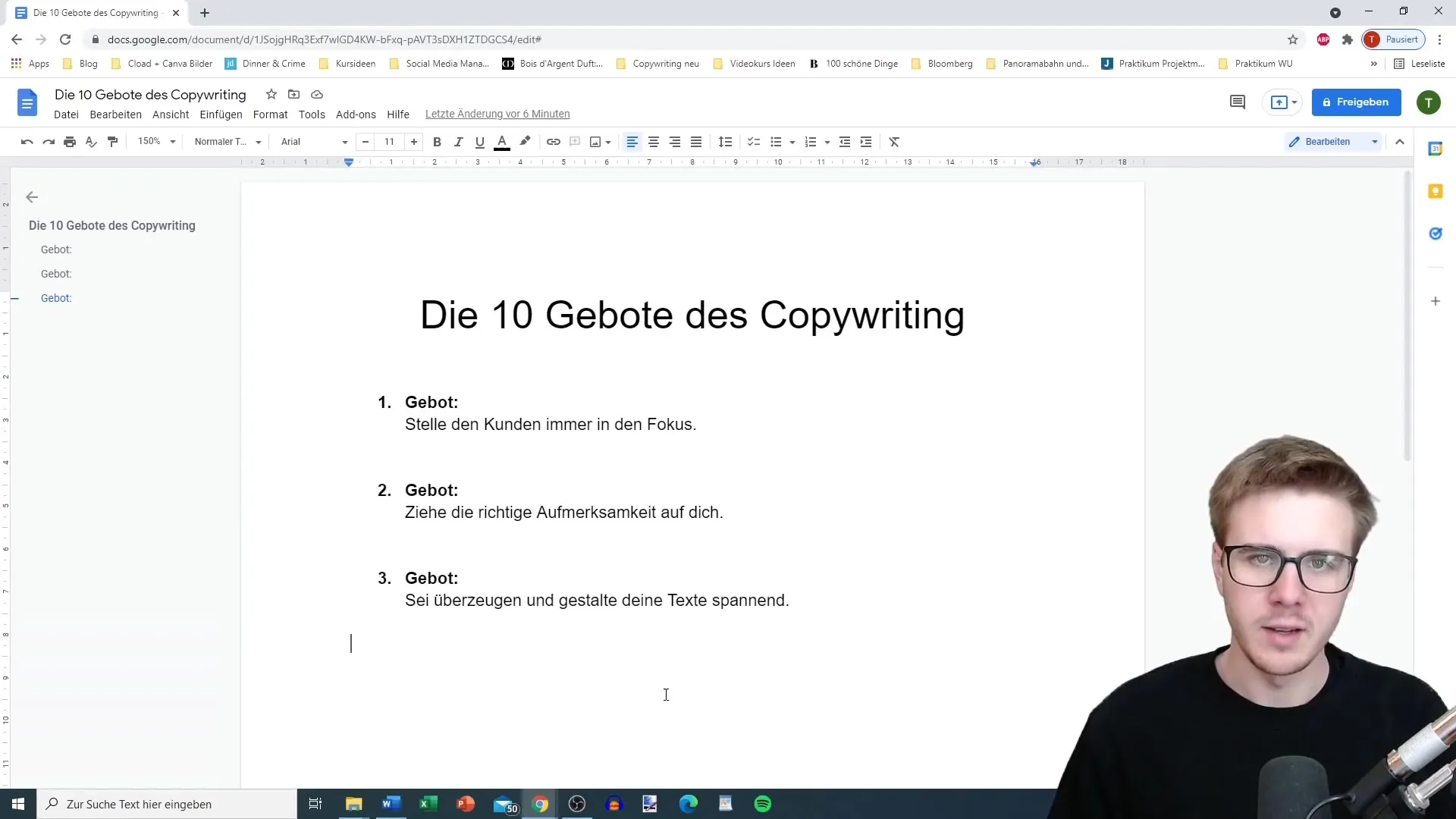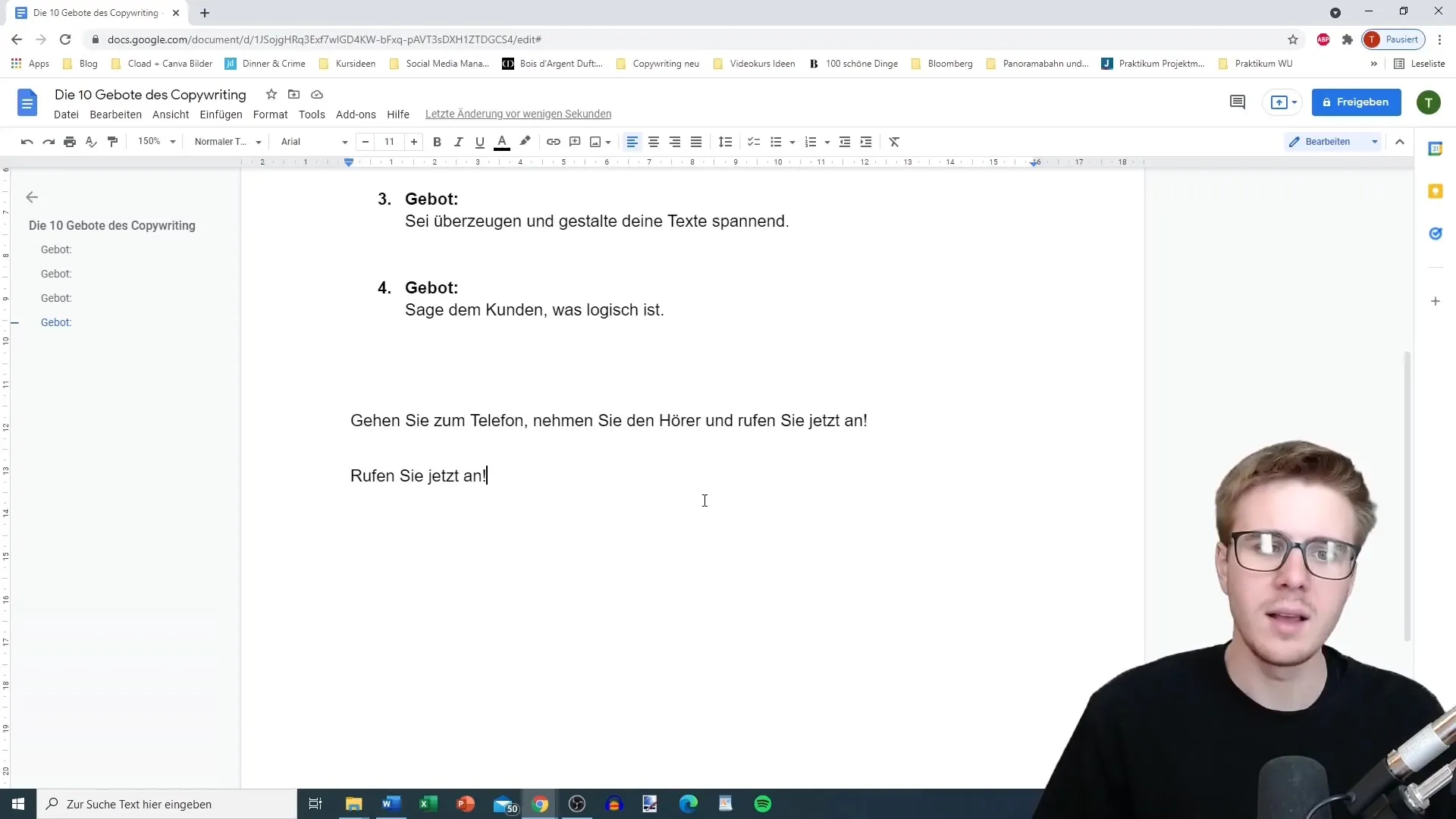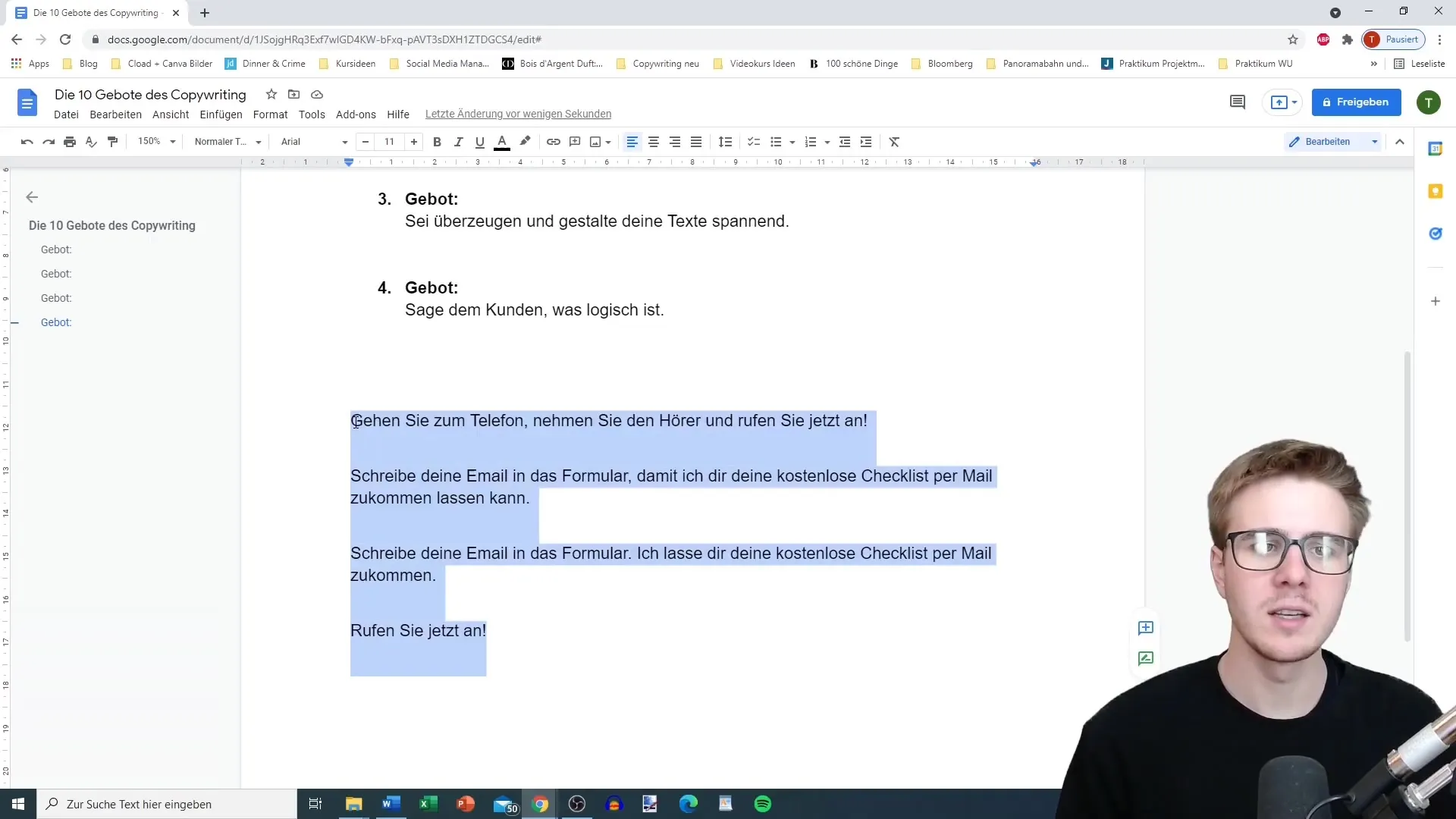Customers often don't just buy because of a great product or service. They want to understand what is expected of them and what they should do to trigger the next action. The fourth commandment of copywriting calls on you to clearly tell the customer what is logical and obvious. This strategy is particularly effective when it comes to leading to a Call to Action (CTA). In the following text guide, I will explain to you in detail how you can successfully apply this principle in your copywriting.
Key Insights
Customers need clear and logical instructions. If you inform them exactly what to do, they are more likely to take action than if your message remains vague. Use direct and understandable formulations, especially in Call-to-Action sentences.
Step-by-Step Guide
Step 1: Understand your Audience
Before you begin formulating your message, it is crucial to understand your audience. Find out what your potential customers already know and what information they need. This will help you tailor your message accordingly.

Step 2: Formulate Clear Instructions
Use a clear, direct approach. When calling for a phone call, don't just say "Call". Explain the process: "Go to the phone, pick up the receiver, and call now." By providing detailed instructions, you make it easier for the customer to take action.
Step 3: Build Logical Connections
Customers follow your instructions better when they understand the logical connections. When you say, "Enter your email into the form so that I can send you your free checklist by email," you clarify the need for action and create a connection between action and result.

Step 4: Avoid Vague Formulations
Avoid using ambiguous or imprecise formulations. Instead of "Enter your email", you should outline the action specifically, for example: "Enter your email address into the form so that I can send you the checklist." This significantly increases the likelihood that the customer will act.
Step 5: Pay Attention to Time Urgency
Add urgency by prompting your customers to act immediately. Use phrases like "Call now" or "Sign up today." This motivates your customers to react immediately.

Step 6: Test Different Approaches
Testing is key in copywriting. Experiment with different formulations and instructions to find out which ones work best with your audience. Analyze the results and adjust your strategy accordingly.
Summary
In copywriting, it is crucial to communicate clear and logical instructions. By telling your customers what to do and explaining the connections, you increase the likelihood that they will take action. Be sure to avoid vague formulations, and test different approaches to find the optimal Call to Action.
Frequently Asked Questions
How do I formulate an effective Call to Action?An effective Call to Action provides clear instructions and creates logical connections for the customer.
Why is it important to tell the customer what to do?Customers need clear instructions in order to


